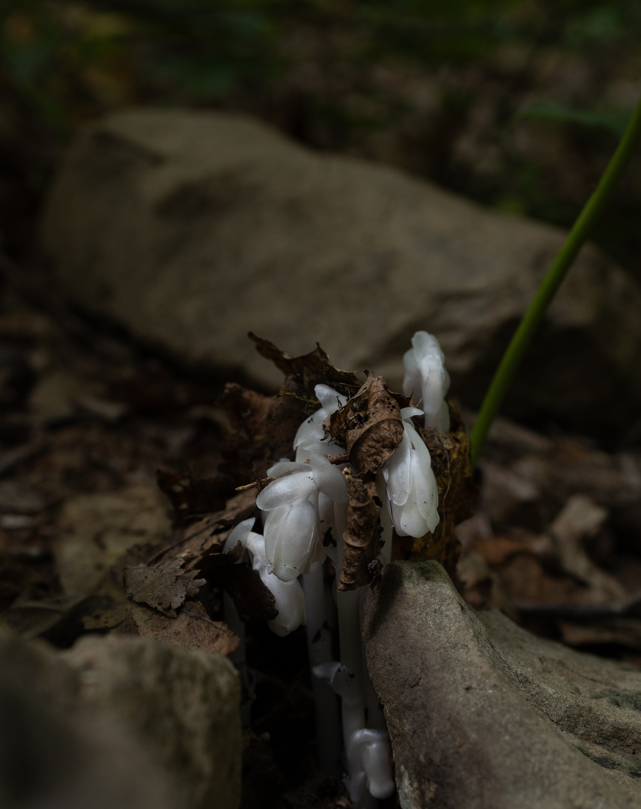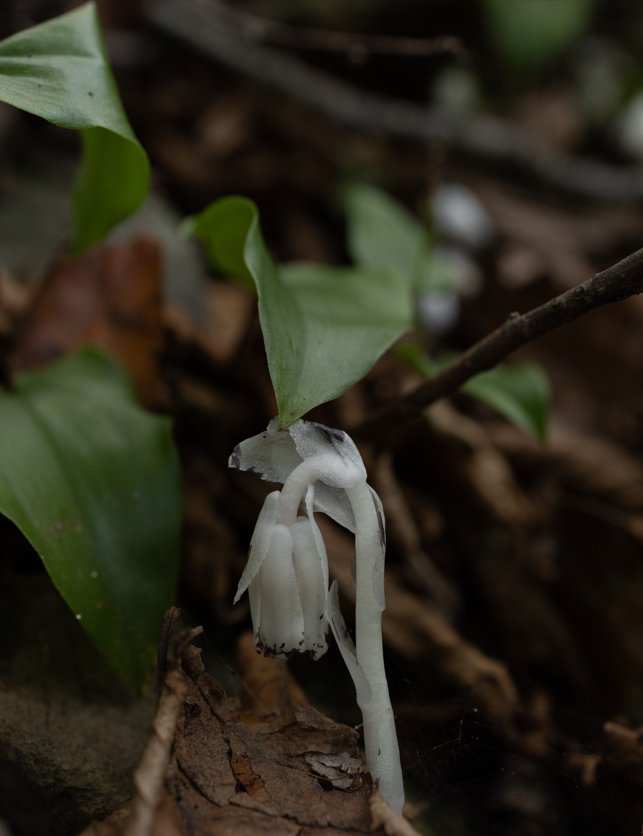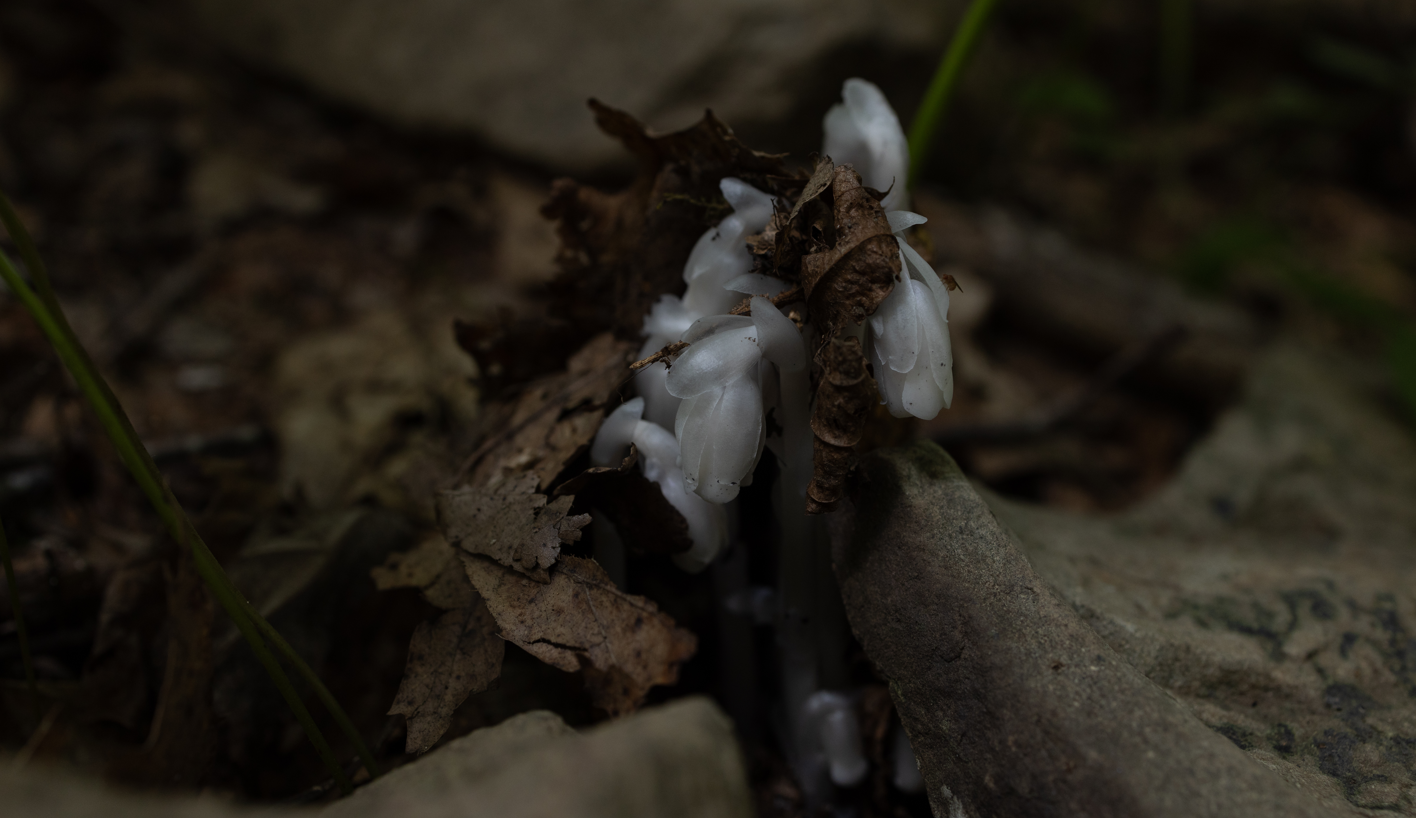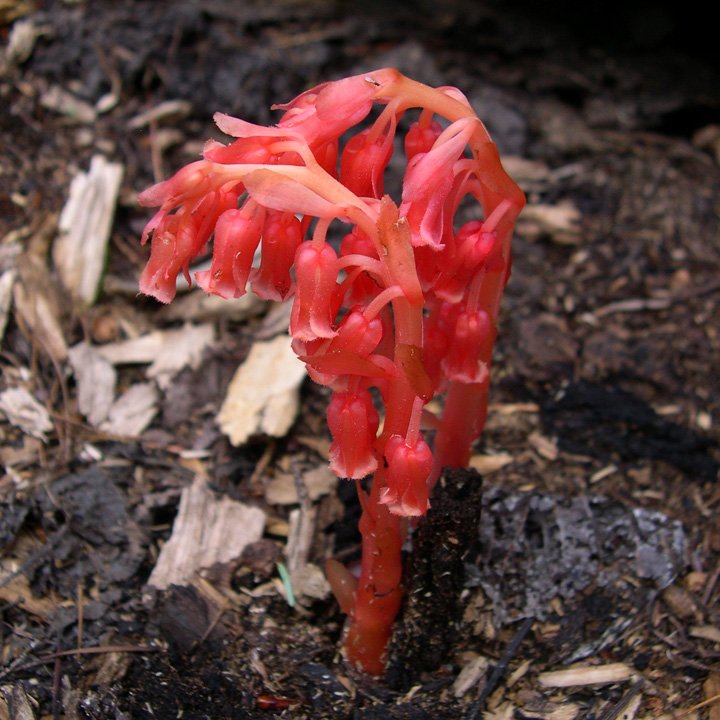Nature's Thieves
OSGF
What would you do in order to survive? Of all the flowering plants (including the largest) in the world around 1% are parasitic, meaning they’ve taken to stealing their resources from a host. This is done by utilizing a structure called a haustorium which is a specialized organ that forms a connection between the thief and its host. It’s not without sacrifice, though.
These plants give up the regular functions that our photosynthesizing species are known for. Along with no longer producing the chlorophyll that makes plants green, some other big tradeoffs are made resulting in smaller root systems, smaller seeds, and leaves that are either reduced or practically nonexistent. Read on to learn about the plants who leapfrog conventions and the lengths they’ll go to in order to ensure their survival.
Ghost Pipe
Monotropa uniflora
Flora of North America. Illustrated by Colored Figures, Drawn from Nature. William Barton. 1820.
Monotropa is in the same family as the mountain laurel (Kalmia latifolia) and blueberry (Vaccinium sp.) but unlike its acidic loving relatives, ghost pipes are more of a fleeting occurrence. Appearing in late summer, sometimes after a heavy rain, these perennial plants inspire wonder at their translucent appearance. Because of their lack of chlorophyll, ghost pipes can grow in the dark understory, under deep layers of leaf litter and in rich soils with little competition from their chlorophyll-laden relatives.
Early botanists first believed Monotropa was just a regular parasite feeding off nearby tree roots. However when scientists couldn’t locate any physical evidence of connecting roots, they began to look at other explanations. After some serious research and observation, ghost pipes were eventually discovered to be mycoheterotrophic. This means that instead of directly parasitizing the roots of a tree, Monotropa parasitize the fungi that are connected to the tree roots. The leapfrog extraction of nutrients via fungi means that the need to produce chlorophyll became phased out during the plant’s evolution.



All plants produce a hormone-like compound that attract fungi, those fungi and their hyphae make up a larger microbiome of mycorrhizae which are (most of the time) beneficial and are complex and vast. The two main fungi linked to ghost pipes are Russula and Lactarius. These fungi come into play at the very beginning of ghost pipes life cycle. After the dust-like seeds have been dispersed and begun to germinate, the fungi colonize the plant roots, establishing an early and essential connection for the ghost pipes.
As referenced in the specific epithet, uniflora, the pale silver stalks only bare one singular flower. The genus Monotropa means ‘one turned’ which references the fully vertical form the single flowers take after the fruit has developed and matured.
Pinesap
Monotropa hypopitys
One other relative to ghost pipes is pinesap. As the common name indicates, these more colorful epiparasites are most commonly found at the base of pine trees, as well as oaks. The beautiful yellow and pink hues are two distinct color morphs. Fall emerging pinesap tends to lean more reddish in color while summer pinesap has a more yellow hue. M. hypopitys is less common than ghost pipes, but is still present throughout North America and conifer-dominated forests of Asia and Europe.
Pinesap’s fungi ‘partner’ is Tricholoma, a white-spored gilled mushroom found widespread in woodlands. As with ghost pipes, pinesap has been utilized by indigenous peoples of North America. Specifically, there are records of First Nations Kwakiutl people or Kwakwakaʼwakw combining the flowers and sundews (Drosera rotundifolia) to make a love potion.
Beechdrops
Epifagus virginiana
A plant’s binomial name can tell us a lot about a species. For instance, the genus Epifagus practically spells things out; the Greek word “Epi” means upon and “fagus” is the botanical name for beech, Fagus grandifolia. In this instance the ‘upon’ here is referencing its parasitic nature of American beech tree roots. Though locally spotted in Virginia by Carl Linneaus, (indicated by the specific epithet, virginiana) it was W.P.C. Barton, a Philadelphia botanist and physician who first attributed the genus.
Image via Discover Life in America. Sheryl Pollock. 2011.
Beech trees are the sole host plant for this holoparasite and as such, they are only found at the base of or nearby the smooth barked trees. Thankfully, they are widely found in undisturbed forests of the Eastern US and commonly appear from September to November. Though given their small size and purple-brownish color, they tend to blend in with the forest floor and don’t draw quite as much attention as others on this list.
Another exception from the other species discussed are the two flower types they produce. The first are large, tall, tubular flowers which are typically sterile (there are occasional exceptions), the second are much smaller and shorter in comparison and contain self fertile seed. As with many of these trickster plants, a tradeoff for having no chlorophyll means seed size takes a big cut. Beech drops are no exception. The tiny dust-like seeds are dispersed by rainfall and are only able to germinate when they’re in close proximity to beech roots. As the seedlings mature their specialized grapplers develop and along with haustoria, they ‘suck’ the nutrients from their beech hosts and the cycle begins again.
Bearcorn
Conopholis americana
Creamy yellow-ish stubby stems of Conopholis americana arise from the leaf litter in late spring and early summer, aligning perfectly with an increase in bear activity. Though this species has a wide range in the Eastern US and up into Canada, it’s not fairly abundant. This doesn’t stop bears from chowing down during the months of May and June when it’s in flower. In fact, for the black bears of the Great Smoky Mountains National Park, bear corn makes up anywhere from 10-15% of their diet. Some naturalists have also coined the common name bear-lax for reasons you can conjure up using your imagination.
Image via Wikimedia Commons.
This is a perennial parasite that, like the beech drops, has a specialized, obligate relationship. Red oak, Quercus rubra, is a tree that dominates many different forest types and serves as bear corn’s host. The process of parasitism is more or less the same with Conopholis and Quercus. Because they’ve given up photosynthesis, their roots are reduced and as they don’t have any leaves, their main priority as plants is to produce flowers, and develop fruit. Once seeds are dispersed, time is of the essence as the small seeds make their way to the roots of a red oak thanks to chemical cues. After contact begins, the parasitic process at which point a “gall-like mass” called a tubercle begins to develop. This process takes close to five years after which bear corn starts producing more ‘corn’. After another 5 years is when the plants reach the end of their life.
Evidence shows that despite the mere decade it gets to live, its unwilling host is not without damage. Roots of oaks that come into contact with the tubercle mass are vastly diminished over time and years of siphoning off nutrients. So much so that some even decay. Another stunningly smart trick is the promotion of newer, shallower root growth by Conopholis. This stimulation promotes root growth to fan outward, creating an easier opportunity for those tiny seeds to come into contact with, and eventually parasitize again.
Breaking down the plant name one last time, Conopholis comes from the Latin ‘cono’ for conifer or cone and ‘pholis’ meaning scale.





